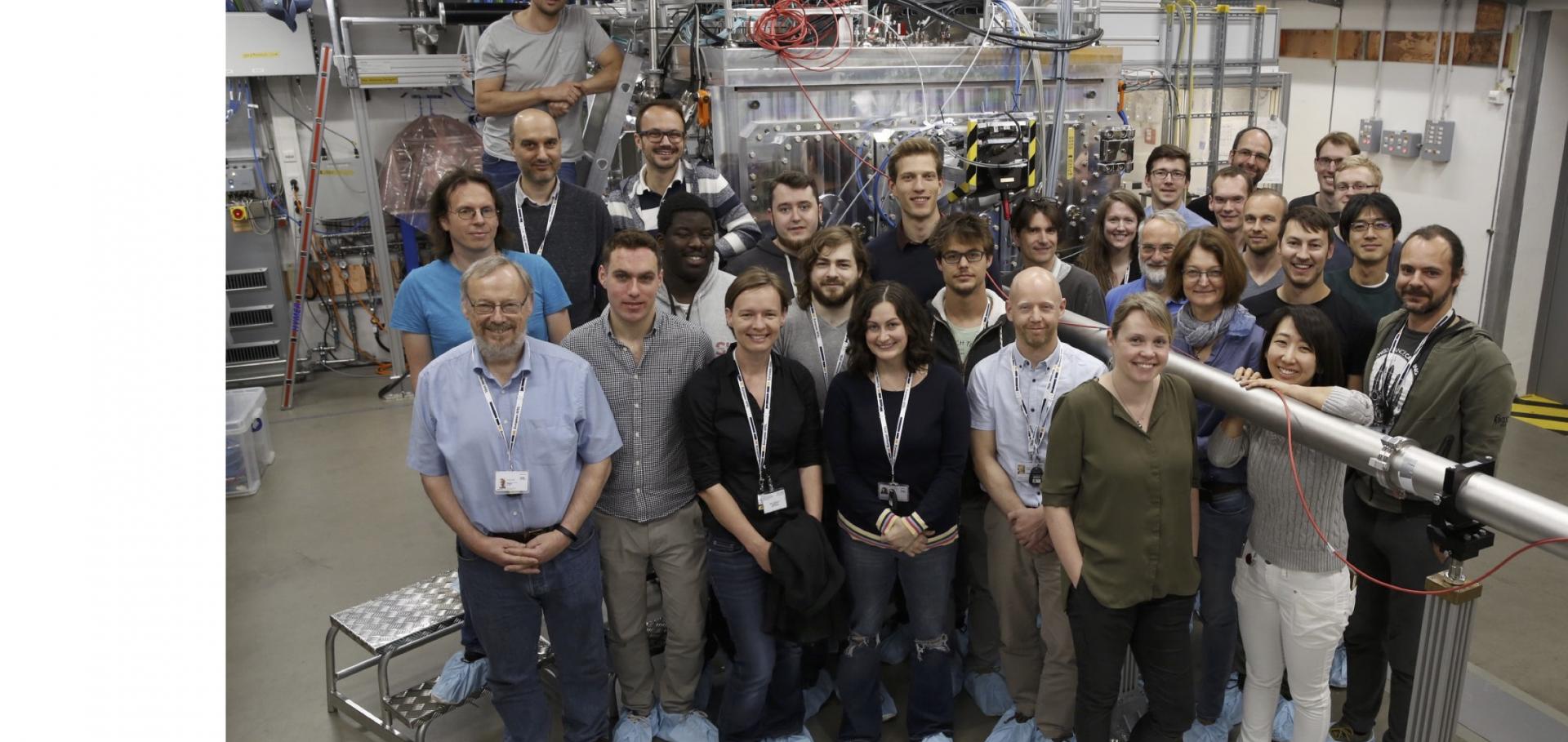Clocking Femtosecond Collisional Dynamics via Resonant X-Ray Spectroscopy
Abstract:
Electron-ion collisional dynamics is of fundamental importance in determining plasma transport properties, nonequilibrium plasma evolution, and electron damage in diffraction imaging applications using bright x-ray free-electron lasers (FELs). Here we describe the first experimental measurements of ultrafast electron impact collisional ionization dynamics using resonant core-hole spectroscopy in a solid-density magnesium plasma, created and diagnosed with the Linac Coherent Light Source x-ray FEL. By resonantly pumping the 1 s → 2 p transition in highly charged ions within an optically thin plasma, we have measured how off-resonance charge states are populated via collisional processes on femtosecond time scales. We present a collisional cross section model that matches our results and demonstrates how the cross sections are enhanced by dense-plasma effects including continuum lowering. Nonlocal thermodynamic equilibrium collisional radiative simulations show excellent agreement with the experimental results and provide new insight on collisional ionization and three-body-recombination processes in the dense-plasma regime.Simultaneous diagnosis of radial profiles and mix in NIF ignition-scale implosions via X-ray spectroscopy
Abstract:
In a NIF implosion hydrodynamic instabilities may cause cold material from the imploding shell to be injected into the hot-spot (hot-spot mix), enhancing the radiative and conductive losses, which in turn may lead to a quenching of the ignition process. The bound-bound features of the spectrum emitted by high-Z ablator dopants that get mixed into the hot-spot have been previously used to infer the total amount of mixed mass; however, the typical errorbars are larger than the maximum tolerable mix. We present here an improved 2D model for mix spectroscopy which can be used to retrieve information on both the amount of mixed mass and on the full imploded plasma profile. By performing radiation transfer, and simultaneously fitting all of the features exhibited by the spectra, we are able to constrain self-consistently the effect of the opacity of the external layers of the target on the emission, thus improving the accuracy of the inferred mixed mass. The model's predictive capabilities are first validated by fitting simulated spectra arising from fully characterized hydrodynamic simulations, then the model is applied to previously published experimental results, providing values of mix mass in agreement with previous estimates. We show that the new self consistent procedure leads to better constrained estimates of mix, and also provides insight on the sensitivity of the hot-spot spectroscopy to the spatial properties of the imploded capsule, such as the in- ight aspect ratio of the cold fuel surrounding the hotspot.In situ X-ray diffraction measurement of shock-wave-driven twinning and lattice dynamics
Abstract:
Pressure-driven shock waves in solid materials can cause extreme damage and deformation. Understanding this deformation and the associated defects that are created in the material is crucial in the study of a wide range of phenomena, including planetary formation and asteroid impact sites, the formation of interstellar dust clouds, ballistic penetrators, spacecraft shielding and ductility in high-performance ceramics. At the lattice level, the basic mechanisms of plastic deformation are twinning (whereby crystallites with a mirror-image lattice form) and slip (whereby lattice dislocations are generated and move), but determining which of these mechanisms is active during deformation is challenging. Experiments that characterized lattice defects have typically examined the microstructure of samples after deformation, and so are complicated by post-shock annealing and reverberations. In addition, measurements have been limited to relatively modest pressures (less than 100 gigapascals). In situ X-ray diffraction experiments can provide insights into the dynamic behaviour of materials, but have only recently been applied to plasticity during shock compression and have yet to provide detailed insight into competing deformation mechanisms. Here we present X-ray diffraction experiments with femtosecond resolution that capture in situ, lattice-level information on the microstructural processes that drive shock-wave-driven deformation. To demonstrate this method we shock-compress the body-centred-cubic material tantalum-an important material for high-energy-density physics owing to its high shock impedance and high X-ray opacity. Tantalum is also a material for which previous shock compression simulations and experiments have provided conflicting information about the dominant deformation mechanism. Our experiments reveal twinning and related lattice rotation occurring on the timescale of tens of picoseconds. In addition, despite the common association between twinning and strong shocks, we find a transition from twinning to dislocation-slip-dominated plasticity at high pressure (more than 150 gigapascals), a regime that recovery experiments cannot accurately access. The techniques demonstrated here will be useful for studying shock waves and other high-strain-rate phenomena, as well as a broad range of processes induced by plasticity.


